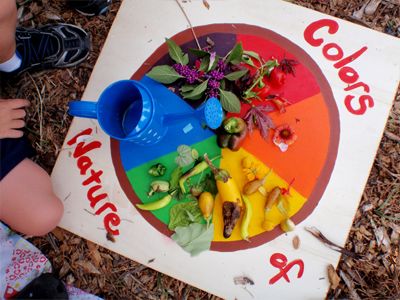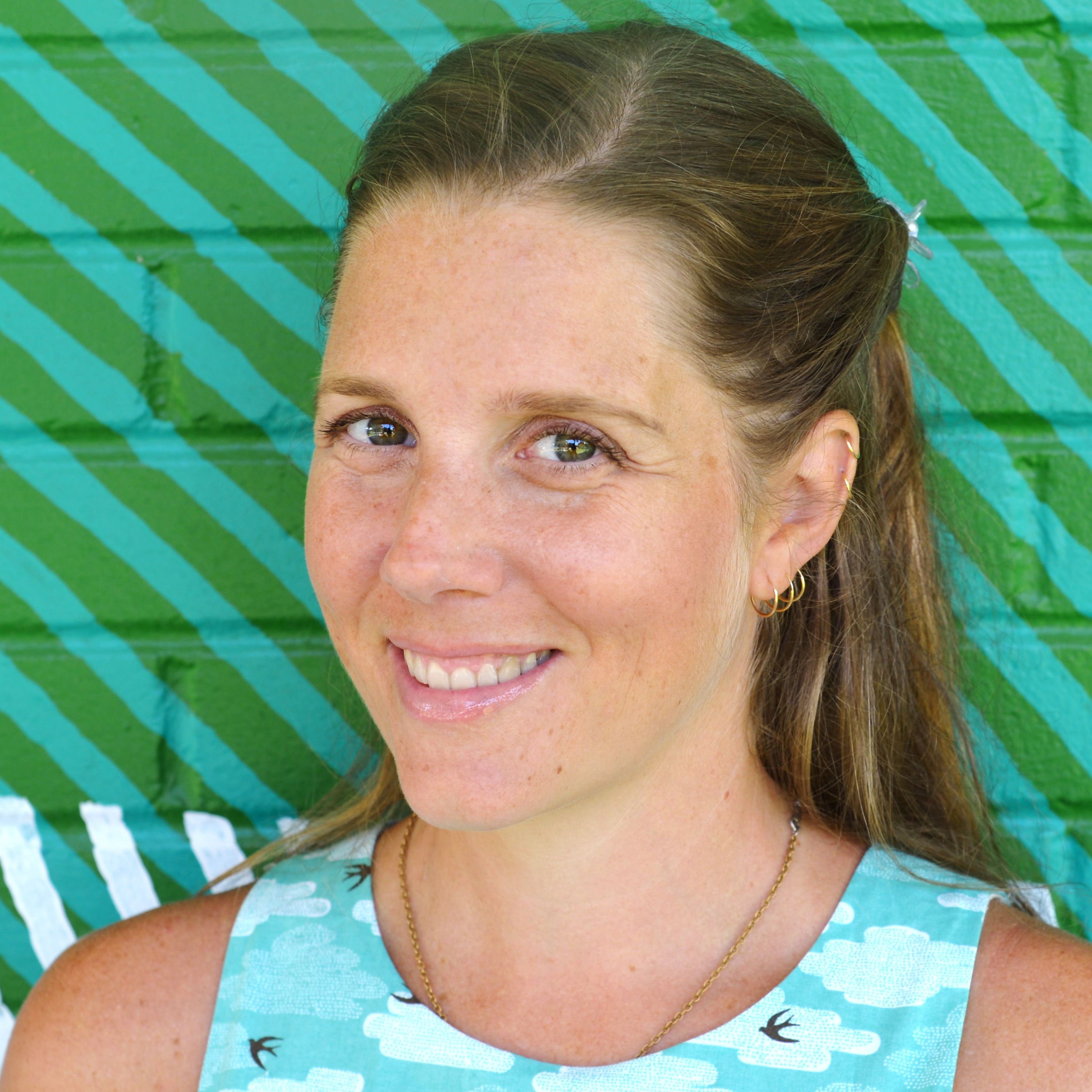The Wonder of Nature's Colors
Color is a magical thing. It is ever elusive and always changing depending on what it is placed next to or lighting. It affects our mood, signals help or harm, and color patterns even indicate what something is made of on an elemental level. Mother Nature’s palette is one of the most magical because it is perfectly suited to every circumstance. It is beautifully ever-changing, with the seasons, time of day, and geographic region. A bright yellow flower signals insects to come pollinate, while a bright red flower attracts hummingbirds. A blue sky tells us no need for an umbrella, while green grass tempts us to remove our shoes and enjoy the cool softness. The mysterious power of color affects every aspect of this bio-diverse world.
It is wondrous to think about color in terms of magic. Luckily, color’s natural mystery is easy to teach with fun, beginning color theory activities. Naming colors, color mixing, and color relationships are popular lessons, but theory alone means nothing to the young child. When we take color into the world of nature, it comes alive! Bringing a color wheel into the garden, where the children actually experience red and green, makes color lessons applicable to the child’s life. This is just one example of how the arts weave together science and nature. It is never too early to start forging these naturally creative connections. Dr. Howard Gardener’s 8th intelligence, the Naturalist Intelligence, is strengthened by sorting and classifying natural items by shape, texture, and color in early childhood. Sorting natural items by color is the perfect way to develop this intelligence, with a long term outcome of environmentally conscious adults in mind.
When we give children something creative to do in nature, meaningful connections abound. Where art and nature meet a sense of wonder is sparked, observation skills are developed, and cross-curricular learning is inspired. Nature provides the stage and art provides the script to help you awaken a love of learning in your students complimented by a lifelong bond with their natural world.
Weaving nature, art, wonder, and culture is a practice long demonstrated by the way artists have taken nature as their muse. From cave drawings to Art Nouveau to eco-artists, nature based art excites us to take a closer look at our world and the ways in which nature, art, and life intersect. Artist Andy Goldsworthy is a wonderful, child-friendly example of how a keen sense of wonder, observation, and color manifests in works of art that illuminate the magic of nature’s colors, while sparking human and nature interaction.
Early childhood researcher, Eyunsook Hyun, also speaks on the importance of wonder-filled childhood nature connections and the development of Gardner’s Naturalist Intelligence. Hyun observed that experiences accumulated in childhood are what define our future relationship with nature and that early childhood is a definitive developmental period for nature connection. Hyun proposes that a child’s predisposition for nature connection must be nurtured from little on, to assure that adequate nature bonding occurs, the ecological brain develops, and the child grows into a nature caring adult (Hyun 2000).
Just taking children outside is not enough. We must captivate children’s ever present senses of wonder through the beauty of nature. We must provide them with creative experiences that nurture natural connections and allow for meaningful assimilation of the nature experience into their lives. The arts provide us with a key to unlock the magic of nature through color by supplying children a vehicle for creative expression of natural experiences. By engaging the senses through nature observation, and then uniting with imagination; we open the door to a magical sensorial world of sweet strawberry reds, fresh pine greens, storm cloud grays, and warm sun yellows, invoking children’s inherent sense of wonder and genetic predisposition to be naturally intelligent.
Create Nature’s Color Wheel: Craft and Scavenger Activity
(Adapted from the book Wings, Worms, and Wonder: A Guide for Creatively Integrating Gardening and Outdoor Learning Into Children’s Lives by Kelly Johnson)
You'll need to have access to a garden with a variety of colored plants that may be picked.
MATERIALS
First choose if you will make one class color wheel or individal ones.
For a class color wheel:
- 24x24 inch heavy paper or an untreated plywood board (I created my color wheel on plywood because it is very durable and won’t blow in the wind.)
- Acrylic paint: red, yellow, blue, orange, green, purple, brown
- Paint brushes
For individual color wheels:
- Create a color wheel template on paper (follow the style of the class wheel below using primary and secondary colors). Write “Colors of Nature” at the top if you would like.
- Colored pencils
PREPARATION
- Class Wheel: Using the acrylic paint, paint a large primary and secondary (red, purple, blue, green, yellow, orange) color wheel on the board. Outline the wheel in brown.
- Individual Wheels: Print off a color wheel template for each child and let them color it in before you head out to the garden.
- Explain that in this lesson we will be using our senses to practice our powers of observation. Explain what observation means and how it will help them discover nature’s colors on this scavenger hunt.
- Center the children in the space. Invite them to close their eyes, begin with two deep breaths, then slowly, lead them through the senses asking them to notice what they see, smell, hear, and feel. When calling on each new sense, re-center with two deep breaths and say, “Send the mind into the . . . nose, ears, skin, etc.” This helps the child bring awareness to that sense. Offer a couple suggestions of what may be sensed, but leave room for personal discovery also. Remind them to answer the questions in their minds and that there will be time for sharing at the end.
- Once everyone appears to be relaxed and connected to the space, invite them to open their eyes. Present the color wheel and ask if anyone knows what this is. If the children are very young, they can name the colors. If you are using individual color wheels, pass them out and go over the colors.
- Explain that they will be seeking out items in the garden that represent each of the colors on the wheel. Clarify that they have permission to gently pick any items for this activity. The goal is to try to fill the colored triangles so that nature’s colors make up the wheel.
- Release them to forage for colors.
- When time is up, or the wheels are full, re-invite the group to join together. Engage in a discussion about what colors were easy to find (green) and what colors were more difficult (blue). Why were some colors difficult to find and others not? Was it because of the season or perhaps the type of garden? If actual blue is impossible, ask children where the largest blue item in nature is, the sky, and playfully invite them to pretend to grab a piece of sky and place it on the wheel. Allow time for the children to share their observations, discoveries, and creative thoughts. Sharing is crucial for assimilation of the experience and nature connections being made.
- If the group is still engaged, discuss the names of the items picked, if the items have a specific job in the garden, what plants are edible to humans and which are not, if they will change colors when they ripen, and any other unique characteristics or musings the colors of nature present.

Works Cited Hyun, Eunsook. 2000. “How Is Young Children’s Intellectual Culture of Understanding Nature Different from Adults?” Annual Meeting of the American Educational Research Association. , New Orleans, LA, 24-28 April Print.
We Love To Hear From You

Hours
Monday: 7:00AM - 5:30PM
Tuesday: 7:00AM - 5:30PM
Wednesday: 7:00AM - 5:30PM
Thursday: 7:00AM - 5:30PM
Friday: 7:00AM - 5:30PM
Saturday: Closed
Sunday: Closed
© 2024 Shyne School. All rights reserved.


Don't Forget to Share This Post!